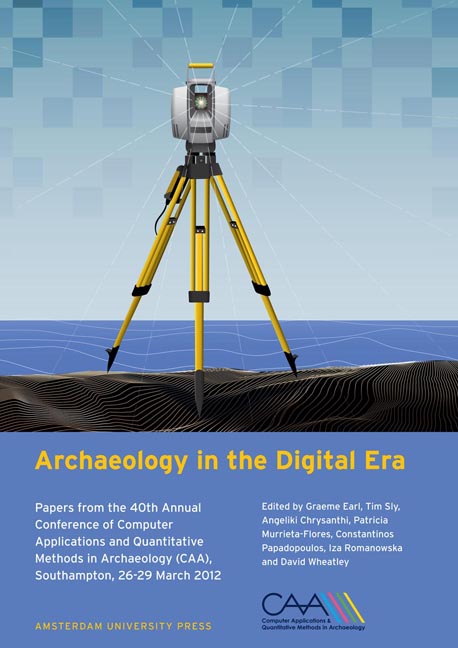 Archaeology in the Digital Era
Archaeology in the Digital Era Transparency, Testing and Standards for Archaeological Predictive Modelling
Published online by Cambridge University Press: 16 February 2021
Summary
Abstract:
This paper starts with considering the extent of archaeological predictive modelling in Europe and the various different techniques used. One of the main criticisms against archaeological predictive modelling is that it is often viewed as a ‘black box’ technique and this paper suggests one possible way to make the procedure more transparent to the non-technical user and allow that user to test and interrogate a model. The paper stresses that, if possible, archaeological predictive models should be tested against new archaeological data, as opposed to how well a model predicts known archaeological data. The paper also suggests that the best way of justifying the use of the archaeological predictive modelling for cultural heritage management is by directly comparing the costs and results from the technique against the existing system of cultural heritage management used. This paper argues that whilst it would be impractical to write standards that cover every technique to produce a predictive model, it would be advantageous to start thinking now about standards for the output of these models. Thus, one model could be directly compared to another model and standardised attribute data could be exchanged between models and other applications.
Keywords:
Archaeological Predictive Modelling, Transparency, Testing, Standards
The Extent of Archaeological Predictive Modelling In Europe’
In late 2011, the words ‘archaeological predictive modelling’ followed by the name of each of the countries of Europe were entered into the Google search engine. Thirty six countries (72%) had reference to research into archaeological predictive modelling within that country, fourteen countries (28%) had no reference to archaeological predictive modelling (Fig. 1) and twelve countries (24%) had reference to the technique being used (in part) for cultural heritage management. However, just because there was no reference to research into, or the use of, archaeological predictive modelling on the internet, does not mean that it does not exist in that country. Hence, the above figures are probably conservative. Internet references for research into archaeological predictive modelling were also found in Australia, the USA, Canada, parts of Africa, etc. The conclusion from this provisional survey is that there is a lot of interest in the technique world-wide and that some countries are starting to incorporate the technique into their systems of cultural heritage management.
- Type
- Chapter
- Information
- Archaeology in the Digital EraPapers from the 40th Annual Conference of Computer Applications and Quantitative Methods in Archaeology (CAA), Southampton, 26-29 March 2012, pp. 340 - 347Publisher: Amsterdam University PressPrint publication year: 2014


